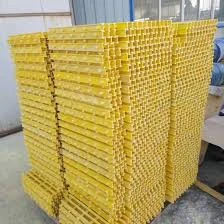
-
 Afrikaans
Afrikaans -
 Albanian
Albanian -
 Amharic
Amharic -
 Arabic
Arabic -
 Armenian
Armenian -
 Azerbaijani
Azerbaijani -
 Basque
Basque -
 Belarusian
Belarusian -
 Bengali
Bengali -
 Bosnian
Bosnian -
 Bulgarian
Bulgarian -
 Catalan
Catalan -
 Cebuano
Cebuano -
 China
China -
 China (Taiwan)
China (Taiwan) -
 Corsican
Corsican -
 Croatian
Croatian -
 Czech
Czech -
 Danish
Danish -
 Dutch
Dutch -
 English
English -
 Esperanto
Esperanto -
 Estonian
Estonian -
 Finnish
Finnish -
 French
French -
 Frisian
Frisian -
 Galician
Galician -
 Georgian
Georgian -
 German
German -
 Greek
Greek -
 Gujarati
Gujarati -
 Haitian Creole
Haitian Creole -
 hausa
hausa -
 hawaiian
hawaiian -
 Hebrew
Hebrew -
 Hindi
Hindi -
 Miao
Miao -
 Hungarian
Hungarian -
 Icelandic
Icelandic -
 igbo
igbo -
 Indonesian
Indonesian -
 irish
irish -
 Italian
Italian -
 Japanese
Japanese -
 Javanese
Javanese -
 Kannada
Kannada -
 kazakh
kazakh -
 Khmer
Khmer -
 Rwandese
Rwandese -
 Korean
Korean -
 Kurdish
Kurdish -
 Kyrgyz
Kyrgyz -
 Lao
Lao -
 Latin
Latin -
 Latvian
Latvian -
 Lithuanian
Lithuanian -
 Luxembourgish
Luxembourgish -
 Macedonian
Macedonian -
 Malgashi
Malgashi -
 Malay
Malay -
 Malayalam
Malayalam -
 Maltese
Maltese -
 Maori
Maori -
 Marathi
Marathi -
 Mongolian
Mongolian -
 Myanmar
Myanmar -
 Nepali
Nepali -
 Norwegian
Norwegian -
 Norwegian
Norwegian -
 Occitan
Occitan -
 Pashto
Pashto -
 Persian
Persian -
 Polish
Polish -
 Portuguese
Portuguese -
 Punjabi
Punjabi -
 Romanian
Romanian -
 Russian
Russian -
 Samoan
Samoan -
 Scottish Gaelic
Scottish Gaelic -
 Serbian
Serbian -
 Sesotho
Sesotho -
 Shona
Shona -
 Sindhi
Sindhi -
 Sinhala
Sinhala -
 Slovak
Slovak -
 Slovenian
Slovenian -
 Somali
Somali -
 Spanish
Spanish -
 Sundanese
Sundanese -
 Swahili
Swahili -
 Swedish
Swedish -
 Tagalog
Tagalog -
 Tajik
Tajik -
 Tamil
Tamil -
 Tatar
Tatar -
 Telugu
Telugu -
 Thai
Thai -
 Turkish
Turkish -
 Turkmen
Turkmen -
 Ukrainian
Ukrainian -
 Urdu
Urdu -
 Uighur
Uighur -
 Uzbek
Uzbek -
 Vietnamese
Vietnamese -
 Welsh
Welsh -
 Bantu
Bantu -
 Yiddish
Yiddish -
 Yoruba
Yoruba -
 Zulu
Zulu
fiberglass reinforced plastic pipe
Fiberglass Reinforced Plastic Pipe A Modern Solution for Diverse Applications
Fiberglass Reinforced Plastic (FRP) pipe, often referred to as fiberglass pipe, has emerged as a favored choice in various industries due to its outstanding mechanical properties and resistance to corrosive environments. This innovative piping solution combines the lightweight nature of plastic with the strength of fiberglass, delivering a product that is not only durable but also highly versatile.
One of the primary characteristics of FRP pipe is its exceptional resistance to chemical corrosion. Unlike conventional materials such as steel or concrete, fiberglass does not corrode when exposed to aggressive chemicals. This property makes it an ideal choice for industries such as chemical processing, wastewater treatment, and oil and gas, where pipes often come into contact with hazardous substances. The longevity of FRP pipes significantly reduces maintenance costs, making them a cost-effective alternative in the long run.
Fiberglass Reinforced Plastic Pipe A Modern Solution for Diverse Applications
Another significant advantage of fiberglass reinforced plastic pipes is their smooth inner surface. This smoothness reduces friction and promotes efficient fluid flow, which is essential for maintaining optimal pressure in pipeline systems. As a result, FRP pipes can enhance the overall efficiency of a piping system, leading to energy savings and improved performance.
fiberglass reinforced plastic pipe

Moreover, FRP pipes have excellent thermal insulation properties. They can withstand a wide range of temperatures without deforming or losing structural integrity. This thermal stability is beneficial in applications involving hot or cold fluids, as the pipes maintain their functional characteristics under varying temperature conditions. Additionally, the insulation properties of fiberglass help to reduce heat loss in thermal applications.
Environmental considerations are becoming increasingly important in today’s world, and FRP pipes offer eco-friendly benefits. The materials used in the production of fiberglass pipes can often be recycled, reducing waste and promoting sustainability. Additionally, because FRP does not corrode, it eliminates the need for protective coatings that can contribute to environmental pollution.
Despite its many advantages, it’s important to consider the limitations of FRP pipes as well. While they are resistant to many chemicals, they may not be suitable for all environments—certain strong solvents and temperatures may affect their performance. Therefore, it is crucial for engineers and designers to assess the specific requirements of the application before choosing FRP pipes.
In conclusion, Fiberglass Reinforced Plastic pipes are revolutionizing how industries approach piping solutions. Their resistance to corrosion, lightweight nature, strength, smooth flow characteristics, and thermal insulation properties make them an optimal choice for a wide range of applications—from industrial to municipal use. As industries continue to seek durable and cost-effective options to meet their fluid transport needs, FRP pipes are poised to play a crucial role in the development of efficient and sustainable piping systems for the future. Choosing the right materials is essential; with FRP, businesses can ensure they are investing in a solution that offers both performance and longevity in a dynamic and often challenging environment.









